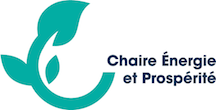This paper examines the cost competitiveness of an extra-large-scale (275,000 m3/d) solar-powered desalination, taking as a case study the Chtouka Ait Baha plant in Morocco. It assesses the conditions at which solar Photovoltaics (PV) and Concentrated Solar Power (CSP) would be competitive with a grid (mainly fossil) driven desalination plant for the reference year and by 2030. The paper considers also a scenario where battery storage complements PV power generation. To conduct the analysis, a simple model of water cost calculation is built. Second, the cost related to energy consumption is calculated for different power supply options to evaluate the impact of energy provision cost on the final cost of water. The first main result of this paper is that desalinated water can be obtained at an acceptable cost of around 1 $/m3. The second one is that PV without storage remains the cheapest power supply option today and by 2030. Storage based solution appears less competitive today but can be more attractive in a framework of increasing electricity grid prices and higher flexibility requirements in the future. The paper gives recommendations regarding the implication of different technology choices in the framework of the future Moroccan energy system.
Maryème Kettani est doctorante associée à la Chaire Energie et Prospérité.
No Upcoming Events found!


